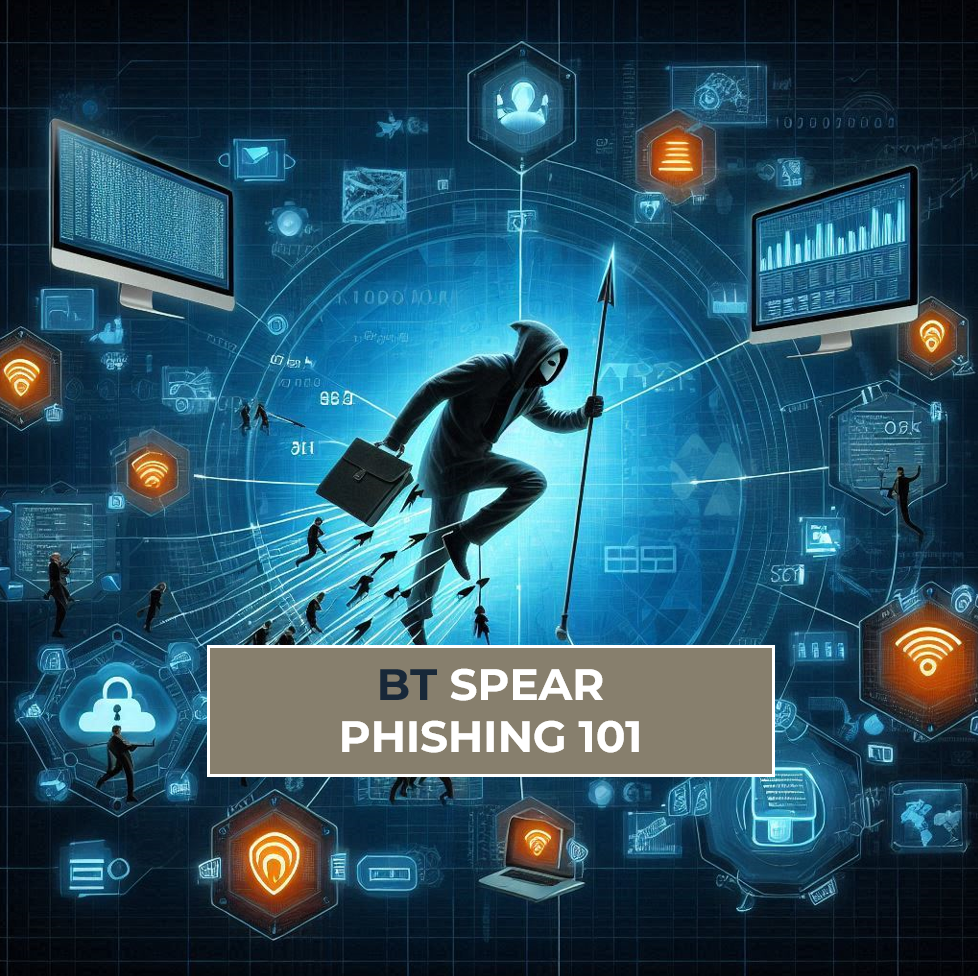SPEAR PHISHING 101
Cybercriminals are always coming up with new tricks, and one of the latest threats is spear phishing. While it may sound like regular phishing, spear phishing is more targeted and, unfortunately, more dangerous. In this month's blog post, we’ll break down what spear phishing is and explore what our team is doing to help protect our clients and their employees.
What Is Spear Phishing?
Spear phishing is a highly focused form of phishing where attackers go after specific individuals or organizations. Instead of casting a wide net like traditional phishing, spear phishers carefully study their targets - often C-level executives or key personnel - to create personalized, convincing messages. The goal? To trick someone into handing over sensitive information or money.
What Makes Spear Phishing Different?
It’s Personal: Attackers research their targets in detail, using information from social media or company websites. Their emails or messages feel legitimate because they’re tailored to the individual or company.
Spoofed Identities: Spear phishing emails often look like they come from trusted sources - like a boss, coworker, or business partner - making them hard to spot.
High Stakes: Attackers might impersonate a CEO or finance executive, requesting urgent wire transfers or access to sensitive data. This is also known as whaling, a form of spear phishing aimed at high-ranking executives.
Why Is Spear Phishing So Dangerous?
Because these attacks are well-researched and convincing, they have a high success rate. The consequences can be severe: large financial losses, compromised sensitive information, or major damage to a company’s reputation. And since these attacks are so personalized, they’re much harder for traditional spam filters to catch.
What Is Our Team Doing To Help?
Clients who have opted into our security package (BT Guardian) or have migrated to our Partner Pro service level receive the following benefits to help protect against spear phishing (and other) attacks:
Cyber Awareness Training: Our CEO (and Certified Information Systems Security Professional), Daniel Nelson, offers on-site or virtual training sessions to review novel threats and provide strategies on how to combat malicious activity. One example: always verify unusual or urgent requests through a second channel (like an outgoing phone call) before taking action.
Quarterly Simulations: We send simulated phishing attacks to our clients once a quarter. This helps employees to recognize phishing attempts and practice skepticism when receiving unexpected requests, especially those involving sensitive data or money. When employees "fail" these tests, we offer training sessions to help them become more cyber aware.
Advanced Email Security: We employ email filtering systems that detect suspicious patterns (like spoofing) and open links/attachments in a sandbox environment to verify that nothing malicious is contained within a message.
Dark Web Monitoring: We constantly monitor the hidden corners of the internet for compromised credentials. When alerted of a new leak, we notify users to change their passwords before a criminal can use that password to access their accounts.
Multi-Factor Authentication (MFA) and Single Sign-On (SSO): These tools add an extra layer of protection, making it harder for attackers to access accounts, even if they manage to steal or purchase your credentials.
Spear phishing is a serious threat that’s becoming increasingly common, but with the right awareness and security measures, you can protect yourself and your organization. Stay vigilant, educate your team, and make security a priority to reduce the risk of falling victim to these targeted attacks. Want to learn more about our security tools? Reply to this email or reach out to your vCIO today!


